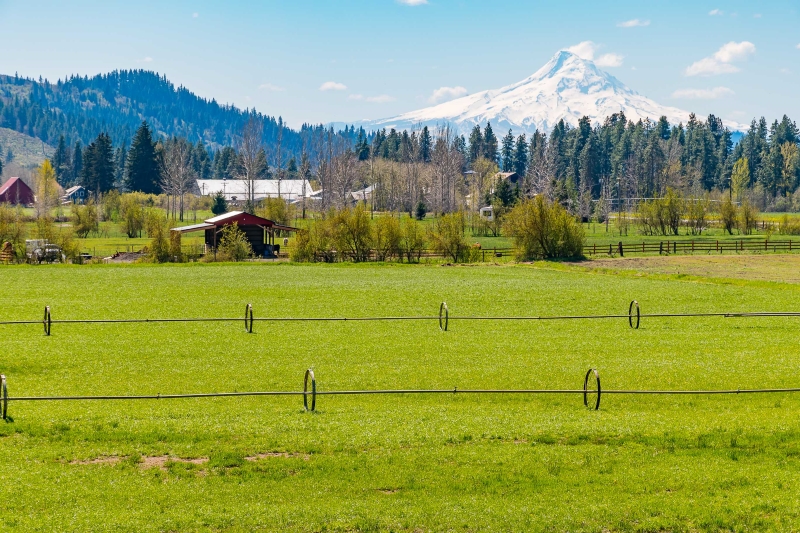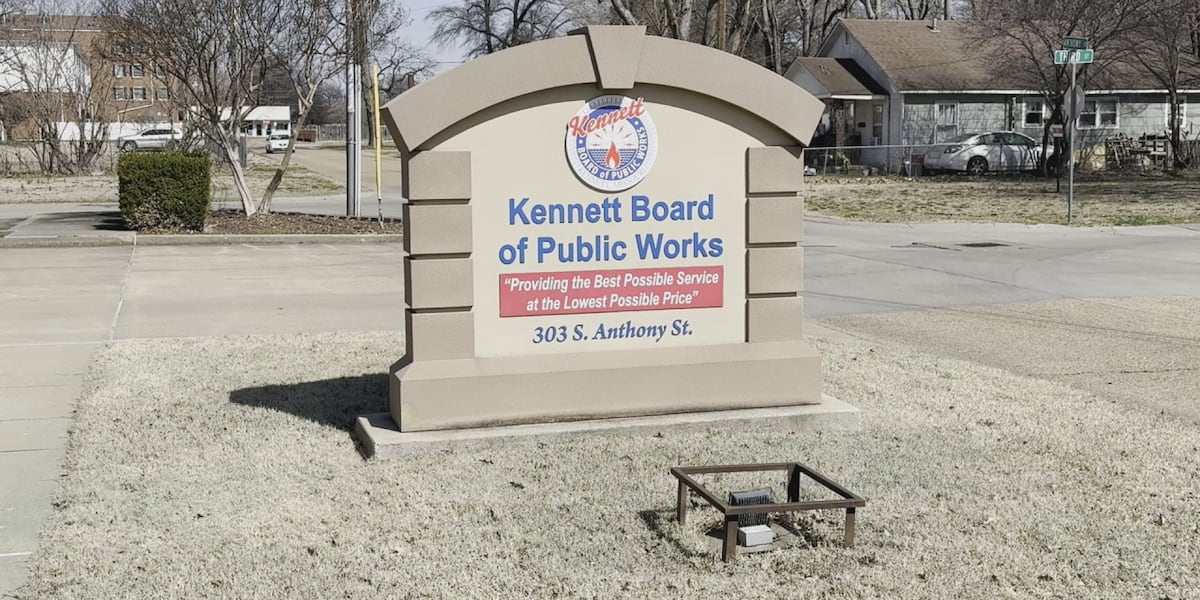Report on the Funding and Sustainability of the Iowa Water Quality Information System
Executive Summary
The Iowa Water Quality Information System, a critical tool for monitoring river and stream health in alignment with Sustainable Development Goal 6 (Clean Water and Sanitation), faced termination following the withdrawal of state funding. In response, Polk County has committed significant financial resources, exemplifying a local partnership model advocated by SDG 17 (Partnerships for the Goals). This report details the funding crisis, the local government’s intervention, and the importance of the system’s data for achieving long-term environmental sustainability.
Funding Crisis and Impact on SDG 6
The water monitoring program, managed by the University of Iowa, experienced a severe funding shortfall that threatens its continued operation. This situation directly undermines progress toward SDG 6, which calls for the protection and restoration of water-related ecosystems.
- Loss of State Funding: The program’s primary state funding was eliminated in 2023.
- Depletion of Supplemental Funds: Additional funding from the Walton Family Foundation and the ISU Nutrient Research Center is projected to be exhausted in the coming year.
- Threat to Water Security: The potential loss of the sensor network would create a significant gap in the state’s ability to monitor water quality, manage resources effectively, and ensure safe water for communities, a key target of SDG 6.
Local Government Intervention and SDG 17
In a move that underscores the principles of SDG 17, Polk County has stepped in to provide emergency funding. Matt McCoy, Chair of the Polk County Board of Supervisors, noted the failure of state and federal bodies to provide support, stating the county has an obligation to protect the water its residents rely on.
- Financial Commitment: The Polk County Board of Supervisors has allocated $200,000 to the program.
- Budgetary Significance: This contribution represents one-third of the water monitoring network’s total annual budget.
- Call for Broader Partnerships: Polk County officials expressed hope that other counties will join the effort to create a multi-partner coalition to fund the statewide network of sensors, embodying the collaborative spirit of SDG 17.
The Importance of Data for Sustainable Water Management
The sensor network provides essential, real-time data crucial for evidence-based policymaking and for measuring the effectiveness of environmental protection initiatives. According to Rich Leopold, Director of Polk County Conservation, long-term data is vital for tracking trends and determining the efficacy of conservation practices. This data directly supports the achievement of multiple SDGs, including SDG 6, SDG 11 (Sustainable Cities and Communities), and SDG 15 (Life on Land).
Key Data Points Collected:
- Nitrate levels
- Water flow rates
- Water temperature
This information allows stakeholders to assess whether investments in water quality improvements, such as the creation of wetlands, are yielding positive results and contributing to a more sustainable environment.
Multi-Sectoral Response and Future Outlook
The effort to save the program extends beyond local government. The Iowa division of the Izaak Walton League has initiated a public GoFundMe campaign, further diversifying the partnership model. While the funding from Polk County provides a temporary lifeline, a sustainable, long-term, multi-stakeholder funding strategy is imperative to ensure the network’s continued operation and to support Iowa’s commitment to the Sustainable Development Goals.
Analysis of Sustainable Development Goals in the Article
1. Which SDGs are addressed or connected to the issues highlighted in the article?
-
SDG 6: Clean Water and Sanitation
- The entire article focuses on the financial struggle and necessity of the Iowa Water Quality Information System. This system’s purpose is to monitor and protect the quality of rivers and streams, which is the core objective of SDG 6. The article explicitly mentions the county’s “obligation to ensure the water its residents rely on is protected.”
-
SDG 11: Sustainable Cities and Communities
- The action is being taken by Polk County, which is identified as “Iowa’s most populous county.” The county’s board is investing in water quality monitoring to protect its residents, directly linking to the goal of making human settlements safe, resilient, and sustainable by managing local environmental quality.
-
SDG 17: Partnerships for the Goals
- The article details a complex partnership and funding issue. It describes how state and federal funding was lost, and now a local government (Polk County), a private foundation (Walton Family Foundation), a university research center (ISU Nutrient Research Center), and a civil society organization (Izaak Walton League) are all involved in trying to sustain the program. This highlights the need for multi-stakeholder partnerships to achieve sustainable development.
2. What specific targets under those SDGs can be identified based on the article’s content?
-
Target 6.3: Improve water quality by reducing pollution.
- The article states that the sensors collect data on pollutants like “nitrate.” The purpose of this monitoring is to track trends and understand water quality, which is the first step toward improving it by reducing pollution.
-
Target 6.6: Protect and restore water-related ecosystems.
- The article mentions that the data is key for “knowing whether certain water quality practices, like adding wetlands, are effective.” This directly relates to the restoration of water-related ecosystems (wetlands) and using data to measure the success of these efforts.
-
Target 6.b: Support and strengthen the participation of local communities in improving water and sanitation management.
- The decision by the “Polk County Board of Supervisors” to provide funding is a clear example of a local authority participating in water management. Furthermore, the “Iowa division of the Izaak Walton League” launching a GoFundMe page demonstrates community and civil society participation.
-
Target 17.17: Encourage and promote effective public, public-private and civil society partnerships.
- The article describes a partnership model involving a public entity (Polk County), a university program (University of Iowa), a private foundation (Walton Family Foundation), and a civil society group (Izaak Walton League). The funding challenges and collaborative efforts described are a real-world example of the dynamics addressed in this target.
3. Are there any indicators mentioned or implied in the article that can be used to measure progress towards the identified targets?
-
Indicator 6.3.2: Proportion of bodies of water with good ambient water quality.
- The article explicitly states that “The sensors collect real-time data for things like nitrate, flow and temperature.” These measurements are direct indicators of ambient water quality, which are used to determine if a body of water meets quality standards.
-
Indicator 6.6.1: Change in the extent of water-related ecosystems over time.
- While not directly measuring the extent of ecosystems, the article implies a related measurement. It notes the data is used to determine if “practices, like adding wetlands, are effective.” Measuring the effectiveness of wetland restoration on water quality is a crucial part of tracking progress under this indicator.
-
Indicator 17.17.1: Amount of United States dollars committed to public-private and civil society partnerships.
- The article provides specific financial data for this indicator. It states that Polk County will “funnel 200-thousand dollars” to the program. It also notes this amount “represents one-third of the annual budget,” implying a total financial need of around $600,000 that must be sourced through partnerships.
4. Summary Table of SDGs, Targets, and Indicators
| SDGs | Targets | Indicators |
|---|---|---|
| SDG 6: Clean Water and Sanitation |
6.3: Improve water quality by reducing pollution.
6.6: Protect and restore water-related ecosystems. 6.b: Support and strengthen the participation of local communities in improving water and sanitation management. |
6.3.2 (Implied): Measuring ambient water quality through data on “nitrate, flow and temperature.”
6.6.1 (Implied): Assessing if practices like “adding wetlands, are effective” to improve water quality. (No specific indicator mentioned) The actions of the Polk County Board and Izaak Walton League serve as qualitative evidence. |
| SDG 11: Sustainable Cities and Communities | 11.6: Reduce the adverse per capita environmental impact of cities. | (No specific indicator mentioned) The county’s investment in water quality monitoring is a direct action toward this target for its residents. |
| SDG 17: Partnerships for the Goals | 17.17: Encourage and promote effective public, public-private and civil society partnerships. | 17.17.1 (Mentioned): The article specifies a financial commitment of “$200-thousand dollars” from Polk County as part of a multi-stakeholder effort. |
Source: radioiowa.com







